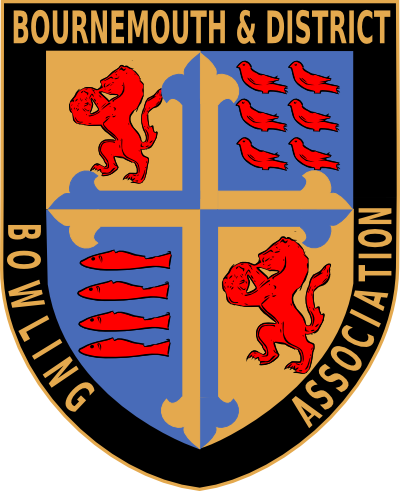Queen's Park BC: 1905-1971
B&DBA: A History of Current & Bygone Bowling Clubs
Initially called Poors Common, and then for 100 years known as “Common 60”, before being named Queens Park in 1902, Queen’s Park Club was established, consisting of an 18-hole golf course with club house, tennis courts and a bowling green. Only the golf course was allowed on the newly named Queen’s Park, due to the council’s commitment made to the Earl Lord Malmesbury in 1904, which was not wishing to have other sports at Queen’s Park. The tennis and bowls were therefore on the other side of what is now Queen’s Park South Drive, just outside of the common area boundary, and could be accessed from Holdenhurst Road. The Earl’s vision was for a peaceful location, and only after his death in 1950 were other sporting uses considered in the park. In 1965 there were plans for tennis courts and further bowling greens at the site of the current main car park, but this never came to fruition.
The bowling side of the club, known as Queen’s Park BC, was not able to be considered one of the founding clubs of the B&DBA, due to only the golf club’s clubhouse and a small part of the golf course located in the Bournemouth Borough, a stipulation at the time. Only in 1914 did the bowling green come into the Borough boundary.
In 1916, Queen’s Park BC hosted a tournament for the Association, despite not being in the B&DBA at the time, however, for reasons believed to be an oversight, Bournemouth BC were left out. This produced a bitterness between the clubs, and one that led to Bournemouth BC leaving the B&DBA at the time, due to the club being left incensed and not satisfied with the outcome of the Delegates’ meeting held after the event. The Association thought about approaching Queen’s Park BC to take the place of Bournemouth BC within the Association, however, it was decided to wait for Queens Park BC to apply for affiliation first. This took over a decade, as it was not until 1928 that Queen’s Park was accepted into the B&DBA.
The club decided not to participate in the league, despite its affiliation. It was seen as more of a private club - one that preferred to socialise rather than play competitive bowls. It remained that way throughout its existence, never entering the league. This resulted in some members joining an additional club within Bournemouth so they could play league games.
Queen’s Park BC were a forward-thinking club however, because no sooner had they affiliated, the Committee received an offer from Queen’s Park member, George Wright, to provide a trophy for a new competition to support local hospitals. It was agreed, and the following year in 1929 the competition took place over two stages - a singles handicap tournament. The Hospital Cup generated £76 10S 6D. The Association sponsored the Bowlers’ Cot for children at Boscombe Hospital, £10 went to Wimborne Cottage Hospital and £30 went to Cornelia Hospital in Poole.
The winner of the Association’s singles championship came from members of the Queen’s Park club on three occasions, and also the B&DBA President was represented by the club in 1951, 1960 and 1966.
The club continued to exist until its demise following Dorset County Council compulsorily purchased land around Holdenhurst Road in the late 1960s for the construction of the Wessex Way. The work caused part of the club to close in 1970. Queen’s Park Bowls Club was forced to disband the following year when the roadworks finally engulfed the site.
The bowling green did not disappear with the Wessex Way build, which would be to the side of the green, and the Association hoped the club would reform and rejoin, but sadly, this did not happen.
Today, nothing remains of the Queen’s Park green, and the club is a distant memory to only a few, having disappeared over 50 years ago, with the majority of the current bowlers completely unaware of its existence.
Queens Park Club still owned the site, and in the late 1970s at the exact location the bowling green occupied, a futuristic complex for sporting activities was built, which is still standing today. In 1993 the site was sold off to a new fitness company, Fitness First, which was the first of more than 360 sites at its peak, as the company became a global success. BH Live took over the building in 2016, keeping it a fitness centre.
